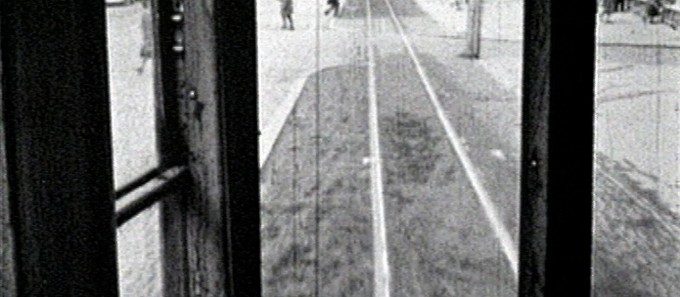- When:
- Friday, January 29, 2016, 7:00pm - 7:00pm
- Description:
-
Marking the rise of new media in Eastern Europe, this selection of works charts the transition from film to video and consists of short works that indicate self-awareness and an engagement with medium specificity. Wanting to explore alternatives to traditional filmmaking, artists in Eastern Europe sometimes risked arrest to gain access to state-owned video equipment. From the mid 1970s to early 1980s, video expanded access to art and society, documenting performance art as well as producing politically subversive reportage. Including films from two of the most important media innovators from the former East, Gábor Bódy (Hungary) and Zbigniew Rybczyński (Poland).
Program includes:
Encounters (Sretanje), Vladimir Petek, Croatia, 1963, 8 min.
Straight Line (Stevens-Duke) (Pravac (Stevens-Duke)), Tomislav Gotovac, Croatia, 1964, 7 min.
Painted in the Air (Malování do vzduchu), Radek Pilař, Czech Republic, 1965, 3 min.
Checkmate (Mat), Pavel Bárta, Czech Republic, 1983, 17 min.
Video Manual, Dalibor Martinis, Croatia, 1978, 2 min.
Image Is Virus, Dalibor Martinis, Croatia, 1983, 5 min.
Ping-Pong, Ivan Ladislav Galeta, Croatia, 1976-1978, 2 min.
Four Bagatelles (Film Language Series) (Négy Bagatell), Gábor Bódy, Hungary, 1975, 28 min.
Media, Zbigniew Rybczyński, Poland, 1980, 2 min.
Kalah, Dóra Maurer and Zoltán Jeney, Hungary, 1980, 12 min.
Cut, Goran Trbuljak, Croatia, 1976, 1 min.(1963–1983, digital video, 87 min.)
The Experimental Cinema in Eastern Europe series was curated by Zdenko Mandusic (CMS) from the series originally screened at the National Gallery of Art as part of the Film Studies Center’s Graduate Student Curatorial Program. The original film series was co-organized by Joanna Raczynska, Assistant Curator, film programs, and Ksenya Gurshtein, A. W. Mellon Postdoctoral Curatorial Fellow (2012-2014), National Gallery of Art. Co-presented by the Smart Museum of Art and the Center for Eastern European and Russian/Eurasian Studies.
Experimental Cinema in Eastern Europe: Medium Experiments, from Film to Video

Straight Line (Stevens-Duke) (Pravac (Stevens-Duke)), 1964